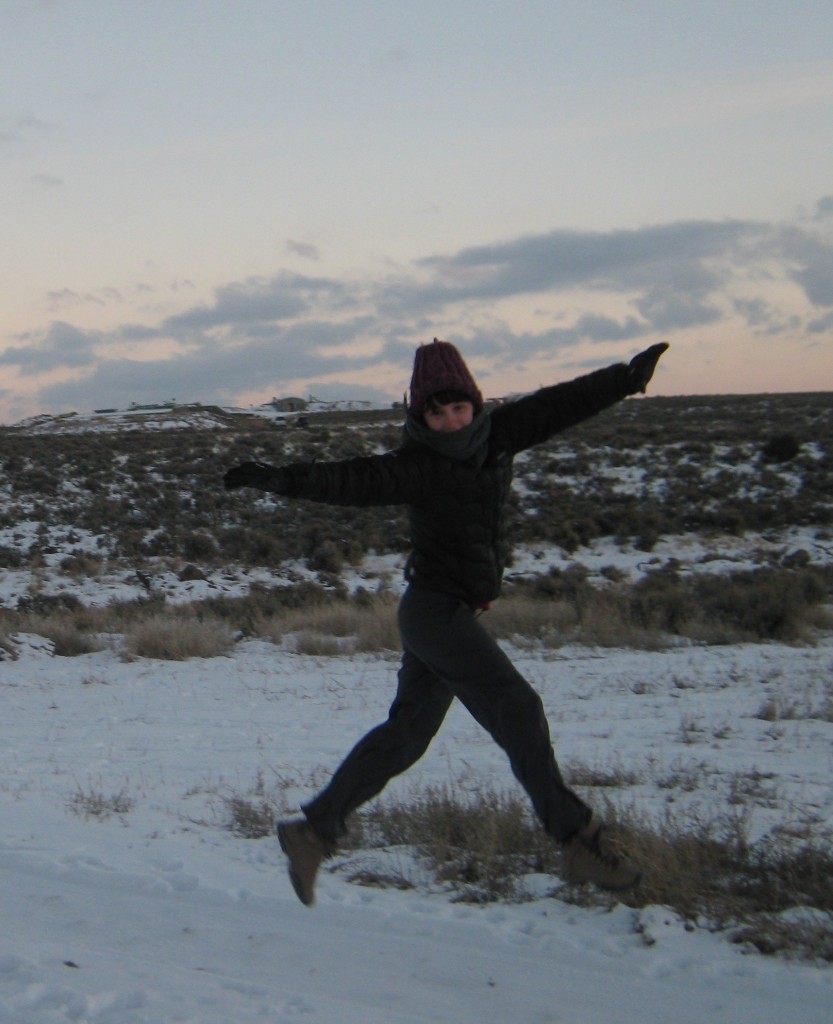A Journey into the Axis Syllabus
BY EMILY JONES
Injury has become overly accepted in the world of dance. I know very few dancers, perhaps none, who haven’t been plagued by injury of some kind. I frequently hear stories of dancers who give up dancing because of injury. I am not one to push through pain, nor do I have any desire to stop dancing. I’ve been searching for the alternative; I believe it’s possible to execute the physical challenges I want to pursue without hurting myself. I have been finding a way of moving sustainably.
The Axis Syllabus has greatly influenced my perspective of what sustainable movement is. Over the past couple years, I have delved into this body of knowledge. Defining what exactly Axis Syllabus is can be tricky. It’s not a technique. It’s not a method. It’s not a form of dance. Instead, Axis Syllabus is a compilation of information regarding human movement from various fields such as anatomy, biomechanics, anthropology and physics. Information is collected from scientific studies, and Axis Syllabus aims to further examine and research these ideas through movement. The goal is to find ways of moving that follow the path of least resistance, minimizing excess tension in the body, and thereby decreasing injury potential.
Axis Syllabus was founded by Frey Faust, and is continually supplemented with research from Axis Syllabus teachers across the globe. The teachers have diverse movement backgrounds and have helped apply Axis Syllabus concepts to various fields such as: dance of many forms, circus skills, capoeira, natural horsemanship, Pilates and yoga. Oftentimes, training methods are based in tradition or outdated understandings of human movement, and the Axis Syllabus aims to question these routines in an effort to evolve them toward more sustainable movement patterns.
So what does sustainable movement entail?
The bones, muscles, ligaments, tendons and connecting fascia throughout our bodies have specific shapes, sizes and orientations. Much of what I have learned through studying Axis Syllabus is in regard to neutral joint ranges. By examining how these things work together we can get an idea of what movement pathways are most efficient. For example, when we closely examine the relationship between the femur bone and acetabulum we can see that the acetabulum faces anteriorly. The femoral head fits snuggly into the acetabulum keeping equal tension on the surrounding tissues. If we wish to keep the joint surfaces in optimal alignment as the leg moves, the pathway of the femur bone will be an arc, causing increasing external rotation and abduction as the leg flexes forward, and internal rotation and abduction as the leg extends to the back. This range of motion keeps the tissues around the head of the femur bone in relatively equal strain.
Of course, this is only examining the movement at the hip joint. In reality, a dancing body is in a constant state of motion, and movement will never be isolated to a single joint. Axis Syllabus teachers often point out the properties of fascia that cause a movement in one area of the body to influence the rest of the structure. Instead of emphasizing isometric holding, much of the research in the Axis Syllabus promotes the idea of allowing movement to travel through the body. This allows the dancer to engage with gravity and laws of physics in a more playful way.
Before encountering the Axis Syllabus, I trained in a way where I forced my body to make movement for aesthetic value. I realize now I was ignoring the structure of my body itself and wasn’t using simple laws of physics to assist in motion. My goals as a mover have shifted to becoming highly sensitized to optimal ranges of motion in each joint and finding ways to play with kinetic energy as I’m moving. Riding the momentum of movement rather than constantly expending energy makes moving more satisfying than ever before.
Of course, restricting my movement choices to pathways defined by what is biomechanically safe has brought up a series of questions: am I being too narrow minded? Is dancing like this still an art? Where is my own creative voice within this type of work? But, I return to the satisfaction of parameters. Parameters give us the outline so there is something to fill. In any form of dance or improvisation score, the outline is what makes the space for creativity to happen.
For me, Axis Syllabus is a user’s manual for the body. The information can be applied to dance, but it has also changed the way I walk, run, and has greatly influenced my work as a Pilates teacher. The way I view movement has completely changed. Watching someone who understands their body and uses it efficiently to create dynamic movement is beautiful. Studying the Axis Syllabus had been an invaluable tool in my development as dancer. I am less prone to injury, and when the inevitable aches and pains do arise, I am able to respond effectively and heal quicker. Knowledge, as always, proves to be empowering.
Emily Jones hails from Portland, Oregon. She moved to the San Francisco in 2010 to study dance at the San Francisco Conservatory of Dance under the direction of Summer Lee Rhatigan. For the past several years, Emily has been performing and teaching Pilates in the Bay Area. The ideas in this article reflect Emily’s experience with Axis Syllabus and do not necessarily represent the greater Axis Syllabus community.

